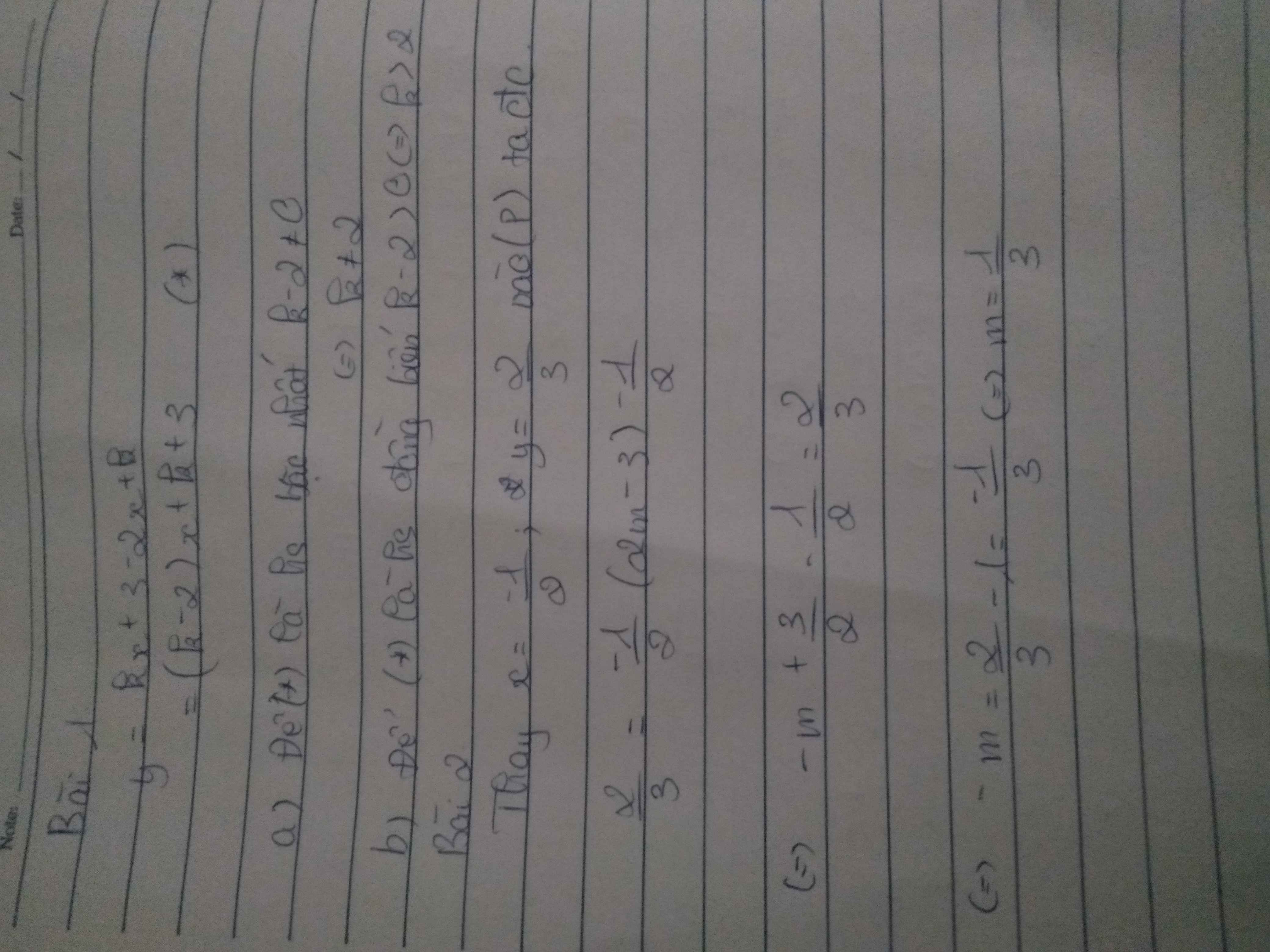Hãy nhập câu hỏi của bạn vào đây, nếu là tài khoản VIP, bạn sẽ được ưu tiên trả lời.

a.
Hàm là hàm số bậc nhất khi:
\(2m-1\ne0\Leftrightarrow m\ne\dfrac{1}{2}\)
b.
Hàm đồng biến trên R khi:
\(2m-1>0\Leftrightarrow m>\dfrac{1}{2}\)
a) Để hàm số là hàm số bậc nhất thì \(2m-1\ne0\)
hay \(m\ne\dfrac{1}{2}\)
b) Để hàm số đồng biến thì 2m-1>0
hay \(m>\dfrac{1}{2}\)

Bài 1:
a) Để hàm số y=(k-2)x+k+3 là hàm số bậc nhất thì \(k\ne2\)
b) Để hàm số y=(k-2)x+k+3 đồng biến trên R thì k-2>0
hay k>2
Bài 2:
Thay \(x=-\dfrac{1}{2}\) và \(y=\dfrac{2}{3}\) vào (D), ta được:
\(\left(2m-3\right)\cdot\dfrac{-1}{2}-\dfrac{1}{2}=\dfrac{2}{3}\)
\(\Leftrightarrow\left(2m-3\right)\cdot\dfrac{-1}{2}=\dfrac{2}{3}+\dfrac{1}{2}=\dfrac{7}{6}\)
\(\Leftrightarrow2m-3=\dfrac{7}{6}:\dfrac{-1}{2}=\dfrac{-7}{6}\cdot\dfrac{2}{1}=-\dfrac{14}{6}=-\dfrac{7}{3}\)
\(\Leftrightarrow2m=\dfrac{-7}{3}+3=\dfrac{-7}{3}+\dfrac{9}{3}=\dfrac{2}{3}\)
hay \(m=\dfrac{1}{3}\)

a, \(\left\{{}\begin{matrix}m\ge0\\\sqrt{m}\ne\sqrt{5}\Leftrightarrow m\ne5\end{matrix}\right.\)
b, Để là hàm số đồng biến thì:\(\dfrac{\sqrt{m}+\sqrt{5}}{\sqrt{m}-\sqrt{5}}>0\Rightarrow\sqrt{m}+\sqrt{5}>0\Leftrightarrow m>5\)

a) Để hàm số đã cho là hàm bậc nhất thì
b) Để hàm số đã cho đồng biến trên tập xác định thì :
c) Để hàm số đã cho nghịch biến trên tập xác định thì:
a) Để hàm số là hàm số bậc nhất thì \(2-m\ne0\)
\(\Leftrightarrow m\ne2\)
b) Để hàm số đồng biến thì 2-m>0
hay m<2
c) Để hàm số nghịch biến thì 2-m<0
hay m>2

a: Để hàm số trên là hàm số bậc nhất thì \(\left\{{}\begin{matrix}m\ge0\\m\ne4\end{matrix}\right.\)
b: Để hàm số đồng biến thì \(\sqrt{m}-2>0\)
hay m>4